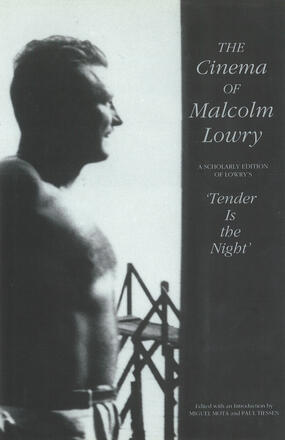
Description
To a remarkable extent the filmscript of Tender is the
Night, which Malcolm Lowry wrote in 1949-50 with the help of
Margerie Bonner Lowry, is less an adaptation of F. Scott
Fitzgerald's novel than an extension of Lowry's own fiction. As
Miguel Mota and Paul Tiessen show, Malcolm Lowry's script contains
important passages which are really "cinematic" restatements
of parts of Lowry's novel Lunar Caustic, and of short
stories such as "Through the Panama" and "Strange
Comfort Afforded by the Profession."
The editors note also the many direct and indirect allusions to
elements from Lowry's master-work, Under the Volcano
(1947), a novel that is regarded by many critics as one of the most
"cinematic" prose works of the twentieth century. A close
study of the text reveals that Lowry took on the Tender is the Night
project partly as a means of reopening his Under the Volcano
narrative, of re-exploring its plot and problems and its characters and
themes, and of carrying as far as possible the "cinematic"
style he had begun to examine in that work.
Lowry's Tender is the Night manuscript is important,
then, not only as a completed, 455-page text in its own right but also
as a text having a direct bearing on Lowry's own reading of
Under the Volcano and of his sense of artistic direction after
that work. Indeed, the editors consider the significance of the
filmscript as a key - hitherto almost entirely overlooked - to
understanding his projected multiple volume work, The Voyage That
Never Ends.
This scholarly edition of Lowry's script presents 38 passages of
varying length - from less than one page to over 100 pages - in which
Lowry writes with a freedom and creativity that lead to a text
narratively and stylistically quite separate and distinct from
Fitzgerald's original. It excludes passages where Lowry adheres
more or less slavishly, at 37 intervals, to Fitzgeralds' novel,
though it provides brief narrative summaries of and comments on those
omitted sections.
Lowry's achievement in his filmscript demonstrates the nature of
his life-long commitment to and extensive knowledge of the
international cinema from the 1910s to the 1950s and also the nature of
his view of the novelist's responsibility to participate in the
development of film as an art.
The script also illustrates Lowry's relationship with F. Scott
Fitzgerald as one in a series of literary kinships, and as the editors
point out, the work becomes a criticism and analysis of both
Fitzgerald's novel and of Fitzgerald himself.
Reviews
The screenplay is crammed with luscious detail about Paris, New York, a French freighter at sea, the beach at Antibes. Lowry's style, freshly honed on the Dantesque bulk of his greatest novel, is so visual it situates us directly in the midst of a three-dimensional whirl of activity.
- Mark Harris
This volume is an important addition to the published Lowry canon, exposing a major link between his cinematically conceived masterpiece and the montage and experimentalism of his late fiction.
- Ronald Binns
Hollywood's loss is our gain. Lowry has written a movie-novel rather than a shooting script for a movie. It is breathtaking prose, a fascinating mixture of Russian montage, German expressionism, and music by Bix Beiderbecke.
- Robert McMillan